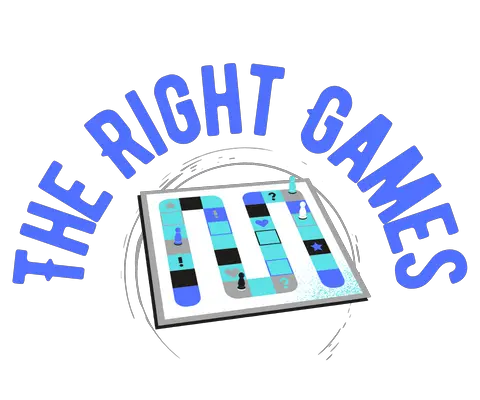While doing research for our post on “Historic Board Games for Dads” I came across a fairly new and lesser-known game that might just be my new favorite.
1961: A Cold War Game is a captivating strategy card game that offers the high-stakes tension of the Cold War era right on your tabletop. This game is accessible and easy to learn, but it provides a strategic depth that is very satisfying. As soon as I read the description of the game, I was intrigued and couldn’t wait for it to arrive, and it did not disappoint.
If you are still not sold, let me walk you through the gameplay and what aspects I find most appealing as well as the few areas that might need some improvement.
1961 Game Overview
- Number of Players: 2 to 6 players
- Gameplay Time: Approximately 15 minutes
- Age Range: Suitable for ages 12 and up
How to Play 1961
Imagine a game that smashes together the tension of the Cold War with quick, strategic gameplay. That’s 1961 for you. It’s a card game where you’ll be bluffing, spying, and nuking your way to victory in just 15 minutes. Perfect for those who like their games fast and their strategy sharp.
Setup
Getting started is a breeze. Here’s what you do:
- Set Your Moon Lander: Each player plops down a ‘Moon Lander’ card in front of them. This is your base, your pride and joy.
- Draw Cards: Each player draws three cards from the deck. Choose one to place face-down in front of your Moon Lander – this is your first line of defense.
- Ready the Deck: Shuffle the rest of the cards to form the draw pile.
Gameplay
The game flows clockwise, so pick who starts first. On your turn, you can do two things: Draw a card and play a card.
Draw a Card: Pull one card from the draw pile. Simple, right?
Play a Card: You’ve got options here. Play one card from your hand in one of three ways:
- Building (White Half): Play a card face-up in front of you. This becomes a building, giving you ongoing benefits.
- Action (Red Half): Discard a card to use its action effect. These are powerful, single-use effects designed to mess with your opponents.
- Supply (Face-Down): Place a card face-down on one of your buildings to supply it. Supplies protect your buildings from enemy attacks and make them more effective.
How to Win
Now, how do you win? There are three glorious paths to victory:
- Reach the Moon: Stack five face-down cards on your Moon Lander and you’re golden.
- Diplomatic Peace: Build three face-up Embassies. You’re a diplomat now, congratulations.
- Nuke the Competition: Be the last player standing after a nuclear showdown. Brutal, but effective.
Tips & Strategies
- Mix It Up: Use a blend of buildings, actions, and supplies. Don’t put all your eggs in one basket.
- Keep ‘Em Guessing: Bluff with face-down cards. Your opponents shouldn’t know if you’re planning to defend or attack.
- Watch Your Back: Keep an eye on what your opponents are building. Counter their strategies with well-timed actions.
My Thoughts on 1961
Quick and Easy to Learn & Setup
One of the standout features of “1961” is how swiftly you can get started. The first time I played, I was joined by a group of players who are not seasoned card game veterans. Here was the makeup of the crew: My mom (age 60), my niece (age 11), my sister-in-law (age 35), and myself (male, age 36).
Despite the varied ages and experiences, it was easy to explain the rules and goals of the game. After about 10 minutes we were comfortable to dive in and actually play a competitive game.
Setting up the game is also quick, much like other card games, you simply shuffle and disperse a few cards. This is ideal for spontaneous game nights or multiple rounds in a single sitting. Don’t let this simplicity fool you, this does not compromise the depth of gameplay.
Variety of Game Outcomes
“1961” offers multiple paths to victory, ensuring that no two games are ever the same. The game incorporates the idea of a “space race” and puts this front and center of the game. However, aiming to reach the moon first can be derailed by an opponent taking out your moon lander card.
Fortunately, this is not the only option to win the game. Players may opt to achieve diplomatic peace or choose the more chaotic approach and be the last one standing in a nuclear showdown. This variety keeps the game unpredictable and replayable.
Strategic Depth
As I mentioned earlier, the game is simple but it does have complexity. Despite having only six unique cards, the game mechanics allow for a range of strategies. Players can build structures, use espionage to gather intel or supply defenses to protect their assets. The game’s dynamics can shift dramatically based on the strategies employed.
My favorite aspect of the game is the automatic counterattack known as the “response system”. If a player launches a missile at one of your buildings and a “response system” card is on top, a missile is launched back at them. This can set off a change reaction and a lot of destruction, changing the game’s outlook in an instant. I find this such a perfect game feature that provides some Cold War Era tensions between players. It makes you rethink every decision.
Conclusion
“1961: A Cold War Game” is an excellent addition to any game night, offering a perfect blend of quick setup, strategic depth, and dynamic gameplay. Its variety of outcomes and the strategic flexibility it offers make it a highly engaging and replayable game. Whether you’re a history enthusiast or a strategy game lover, “1961” promises an entertaining and thought-provoking experience. Check it out and prepare to navigate the delicate balance of power in a world on the brink of war!



